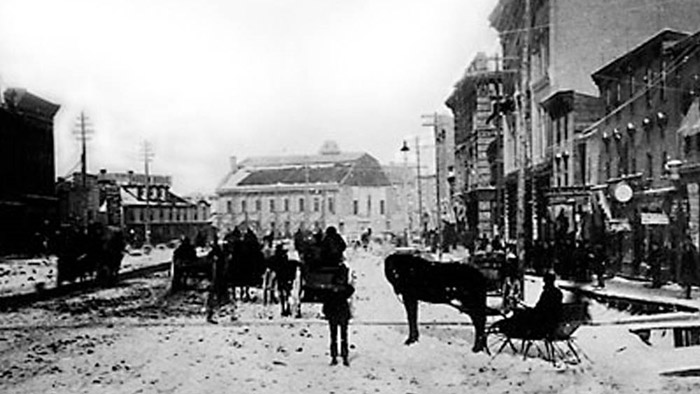Like most Manitobans, I look toward the inevitable coming of winter with trepidation and muted anticipation. Are we going to have any exceptional cold spells? Will the roads be perpetually icy? Will we have enough snow to get out and ski, slide or sleigh in the beauty of nature? One clear sign of the upcoming winter is the MHV Christmas Market on this Saturday, Nov. 9 from 10am-4pm!
With the changing season in mind, I want to think back to the experience of the Mennonite families who arrived in 1874, to imagine how they might have experienced their first winter. We know from documentary evidence that they found their first winter exceedingly difficult. Arriving in Manitoba in late August or early September, they had little time to prepare for a winter unlike any they had experienced before. The Ukrainian cities of Dnipro and Zaporizhzhia, in the region of several of the Mennonite colonies, show historic temperature averages from the mid to late-1800s for December and January to be between +5°C and -5°C, with a few exceptionally cold years in 1855 and 1889 reaching averages of -10°C (data for the 1860s & 70s is missing). By contrast, historical data from St. John’s College in Winnipeg shows average temperatures from December 1874 at -16°C (Av. High: -9°C, Low: -22°C) and January 1875 at a frigid -27°C (Av. High: -20°C, Low: -33°C)! Averages never really tell the whole story, as the low temperatures for Christmas Eve and Dec. 28,29, and 31st were below -30°C, with the 28th being -38°C. January 1875 only had two days with highs above -16°C, with New Year’s Day at -7°C and the 31st at -4°C.
The Mennonite migrants did their best to prepare for the long and bitter winter in Canada. Many packed heavy coats in their travel cases, and before disembarking at the confluence of the Red and Rat rivers, families purchased stoves, among other goods, in Winnipeg. The land they arrived on was either bush, swamp, or open grassland. Most had spent their capital on other supplies and transatlantic travel, so they did not have the finances or time to establish wooden homes in the first winter. Semlins (sod-houses) were built, which when heated would leak from the melting snow on the roof. While these homes provided much needed insulation, due to the harsh temperatures families had to share the space with their livestock. Several families in Steinbach lost their oxen due to the inability to feed them through that first long winter. It is hard for us today to imagine the hardship of surviving that first winter. Moving from a place where you have established homes, to starting from scratch, from a climate with milder, shorter winters to one with winters that stretch on and average temperatures twenty degrees colder than you are used to is difficult for many Manitobans to imagine.
Making comparisons about the experience of winter in different places is difficult. Having spent several winters in New Zealand, experiencing 0°C with 100% humidity and no meaningful way to heat your home is a bone-chilling experience. Those who have spent time on the BC coast will have had similar experiences. That aside, there is no real comparison with the breath-taking cold like the -43°C experienced by our Mennonite ancestors on January 8, 1875. Reflecting on this early Mennonite experience can give us perspective to be grateful for the amenities that will make our lives comfortable through the coming season. Let us be mindful of the unhoused in our community and our newcomer neighbours for whom this winter might be a difficult experience. I encourage you to reach out and do something that might warm up someone’s winter!
MHV is seeking to make your winter more enjoyable, and we encourage you to come and see the village lights, skate on our rink and hop on a sleigh ride with Winter in the Village, December through January.




